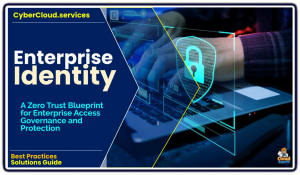Zero Trust Architecture for Enterprise Identity
ZTA treats identity as the new perimeter, ensuring robust authentication and authorization to protect sensitive data across hybrid environments.
 Zero Trust Architecture (ZTA) redefines enterprise identity security by rejecting the outdated notion of implicit trust and demanding continuous verification of every user, device, and transaction.
Zero Trust Architecture (ZTA) redefines enterprise identity security by rejecting the outdated notion of implicit trust and demanding continuous verification of every user, device, and transaction.
In today’s landscape, where remote work, cloud computing, and sophisticated cyber threats like credential theft dominate, traditional perimeter-based security falls short.
ZTA treats identity as the new perimeter, ensuring robust authentication and authorization to protect sensitive data across hybrid environments.
Zero Trust Best Practices
At its core, Zero Trust operates on the principle of “never trust, always verify.” Every access request requires explicit validation using contextual data such as user identity, device health, and behavioral patterns.
By enforcing least privilege access, enterprises grant only the minimum permissions necessary, minimizing the attack surface. The assumption that a breach has already occurred drives continuous monitoring and rapid response to anomalies, making ZTA ideal for mitigating risks like phishing or insider threats.
Implementing Zero Trust for identity involves a centralized identity provider (IdP) with single sign-on (SSO) to streamline secure access. Multi-factor authentication (MFA), including passwordless options like biometrics, strengthens defenses against credential-based attacks.
Enterprise Identity
Device trust ensures only compliant endpoints access resources, while attribute-based and role-based access controls enforce granular policies. User and entity behavior analytics (UEBA) paired with security information and event management (SIEM) systems enable real-time threat detection, ensuring dynamic adaptation to risks.
Transitioning to Zero Trust requires auditing existing identity systems, defining clear policies, and deploying technologies like MFA and SASE (Secure Access Service Edge). Challenges include integrating legacy systems and balancing security with user experience, but the payoff—resilience against breaches—is substantial.
As AI-driven analytics and passwordless authentication advance, Zero Trust will continue evolving, aligning with privacy regulations and securing IoT environments. By embracing this paradigm, enterprises can safeguard their identities and data in an interconnected world.



